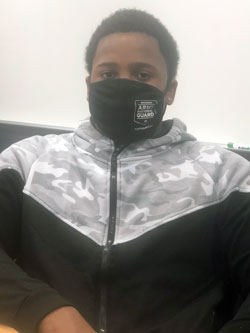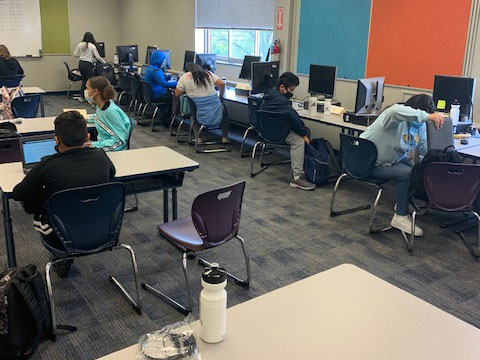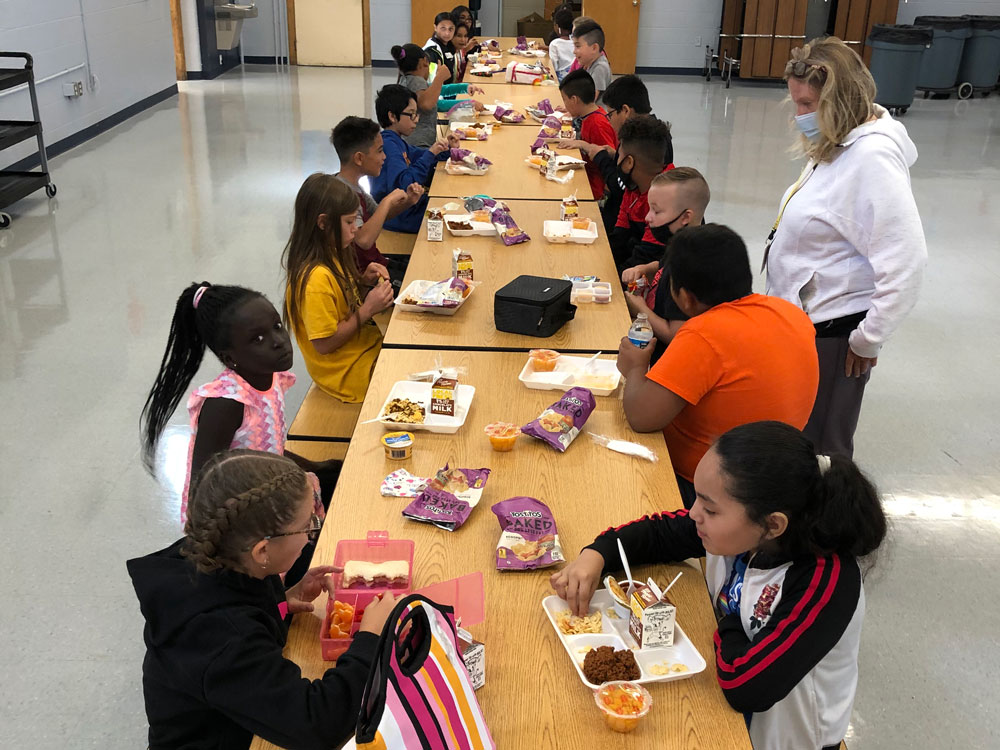After spending the first couple weeks in virtual school, fifth-grader Jakiyah Johnson said she knew as she entered through the doors of North Godwin Elementary on Sept. 14 that this year was going to be great.
“I knew this because I was going to be able to meet my new teacher and after being out of school, be able to be back with my friends,” she said.

All district students were distance learners the first few weeks of this school year. The district had a phased-in return to in-person learning for those who chose that option, with elementary students coming back on Sept. 14, middle school students on Sept. 21, and high school students on Sept. 28.
“The first day I was kind of spooked about it,” said junior Jabari Crump. “You’re not sure what to expect, and you are concerned about how it is going to go.
“To be honest, during the lockdown the only people I saw were my family, so it was just good to be able to get out of the house.”
For most of the returning students, getting out of the house and seeing friends was as much of a priority as safety concerns.
“I was ‘ner-cited,’” said West Elementary second grader Jacoby Sucaldito. “Nervous and excited: ner-cited. Nervous about coming back but excited to see my friends.”

The Challenges of Virtual Learning
Through state and district funds including a grant from the West Michigan Leadership Academy and money from TEAM 21, Godwin was able to provide all of its students with Chromebooks for virtual learning. The district also made hotspots available, partnered with two local churches to provide free WiFi and notified families of free WiFi at Kent District Library branches.
Students shared challenges with internet issues:
“You would get kicked out of class because there were too many people on the internet,” said eighth-grader Makiya Burns.
Added eighth-grader Arely Orellana: “You would go to ask a teacher a question, and then the internet would cut out. Then the teacher would repeat the answer and the internet would cut out again.”
There were other distractions, they said, such as parents and siblings in the background, and the inability to have individual conversations while on Zoom.
Teachers tried to create a routine during virtual lessons, said Jacoby and fellow second-grader Alanah Reid, but even with the scheduled morning meetings, math and reading meetings, it was not like being in class.
“You don’t feel close to people as you can only talk online,” said Jakiyah. “You want to be able to touch things like you can in a classroom, and you don’t have a desk.”

Changes in the Building
“There is a lot of hand sanitizer everywhere,” said Jakiyah, who, like many elementary students, sported a break-away lanyard around her neck that clipped to her mask. This way, she said, she can take the mask off on the playground without losing it.
Mask-wearing is mandatory and social distancing is part of the routine, and in all district buildings, students are in the same class every day. At the elementary level, students eat in the classroom instead of a common area. On the playground, each class stays with their cohort.
At the middle and high schools, students stay in the same classroom and teachers switch rooms.
Jabari said being in the same classroom has been hard as, at times, he would like to get out and move around. “So it is a good thing I have got gym,” he added with a chuckle.
Middle School Principal Bradley Tarrance said they have not had any behavioral issues around the added procedures. West Godwin Elementary Principal Mary Lang said principals have been talking to students and staff about how things are going and where improvements can be made.
Feeling Safe
Tarrance said the district is about evenly split between students who attend in person and those who attend virtually. After the first quarter — Oct. 26 — students who are virtual can opt to return to in-person school. Tarrance suspects the district could see more in-person students.
“Teenagers use a lot of social media, and through that I have been asked about my day and how things are going and whether it was safe,” eighth-grader Arely said.
Makiya said she thinks some of her peers waited to see how others did with in-person learning before considering returning.
That’s the case for high schooler Jabari.
“The group that I am in, some of the students are still virtual,” he said. “The virtual classes can be tough, and it is just so much easier to be in person to be able to talk to the teacher if you have questions.”












